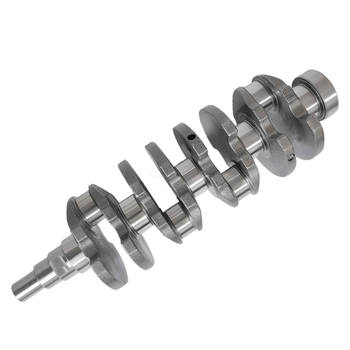Understanding Crankshaft Misalignment
Have you ever wondered what could be causing that unusual noise in your engine? It might be due to crankshaft misalignment. In simple terms, crankshaft misalignment is when the crankshaft and the other components it's connected to, such as the camshaft and transmission, are not properly aligned.
The Importance of Early Detection
Detecting crankshaft misalignment early on can save you from significant engine damage and costly repairs. So, how can you tell if your crankshaft is misaligned? Let's explore the early signs together.
Unusual Noises
One of the most common symptoms of crankshaft misalignment is unusual noises coming from the engine. These sounds may include knocking, rattling, or even grinding. If you notice any such noises, it's essential to investigate further and consult a professional if needed.
Identifying the Source
To determine if the noise is due to crankshaft misalignment, try to pinpoint the exact location of the sound. Is it coming from the front, middle, or rear of the engine? Knowing the source can help diagnose the issue more accurately.
Vibrations
Another sign of crankshaft misalignment is excessive vibration. This can be felt when the vehicle is idling or during acceleration. If you notice your car shaking more than usual, it might be time to check for misalignment.
Assessing the Severity
To assess the severity of the vibration, pay attention to how it changes with engine speed. In some cases, the vibration may decrease as the engine speed increases, indicating a possible misalignment issue.
Reduced Performance
Crankshaft misalignment can also lead to reduced engine performance. You might notice a decrease in power, poor fuel efficiency, or difficulty starting the engine. These symptoms can be caused by various factors, so it's crucial to consult a professional for an accurate diagnosis.
Diagnostic Tools and Techniques
Mechanics often use specialized tools, such as dial indicators and laser alignment systems, to diagnose crankshaft misalignment accurately. These tools can measure the degree of misalignment and help determine the best course of action for repair.
Preventive Maintenance
Regular maintenance is key to preventing crankshaft misalignment and ensuring optimal engine performance. Here are some preventive measures you can take:
- Regularly check and replace engine mounts
- Inspect the timing belt or chain for wear and tear
- Ensure proper torque specifications during engine assembly
Conclusion
Detecting early signs of crankshaft misalignment can save you from expensive repairs and keep your engine running smoothly. By being aware of unusual noises, vibrations, and reduced performance, you can catch potential issues before they become serious problems. Remember, regular maintenance and professional inspections are your best defense against crankshaft misalignment.
For more detailed information on crankshaft misalignment and preventive maintenance, please visit our official website: crankshaft misalignment




